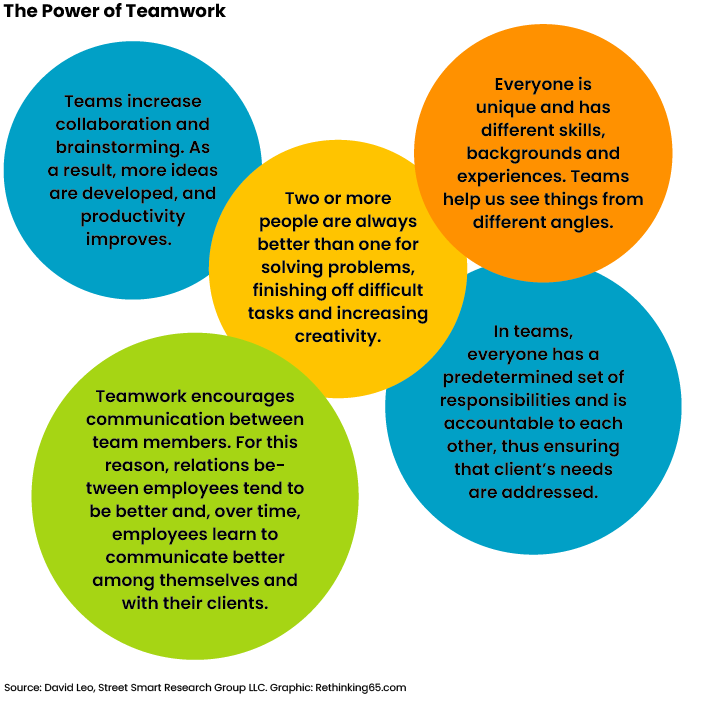
When we first started in the advisory business, many of us were hungry for clients. As a result, five, 10, 15, or 20 or more years later we have clients that are now hampering our business growth because they require more time than their business can justify: They are unprofitable. Worse, they are consuming time from other profitable clients and/or our ability to grow our businesses.
The Dilemma
We are human with emotions like caring, responsibility, obligation, and commitment. When we asked an investor to hire us as their advisor in our early days, we made a commitment to care about their financial well-being and to help them. Though they are now unprofitable, we feel obligated to them and grateful they signed on with us all those years ago when we needed them. “Dumping them” because they no longer fit our business as well as we would like just doesn’t feel right. Hence, the dilemma and the question: What do I do?
Here are some options:
Transform to Profitability
The determination of client profitability is simple. The basic profit calculator formula is Profit = Revenue – Costs. Though this profit equation is simple, making a respectable profit can be difficult and the calculation of costs can also be difficult. It is therefore a separate determination and discussion.
Let’s assume, though, that you have gone through a process that has defined a client or set of clients that are unprofitable. You now have two main paths to improve their profitability:
1. Increase revenue
• Convert transactional client to fee-based clients.
• Bring in assets and/or add other fee services or products.
• Consider their value as an important provider of introductions. If introductions from unprofitable clients result in new households with, for example, several million dollars in assets, that client can be a high-value influencer that you will want to acknowledge and likely want to retain as a client.
• Consider the potential impact on related clients, such as losing or harming the depth of relationships with the unprofitable client’s friends or family.
2. Lower the costs of providing services
This can be done through such measures as:
• Reassigning the client to a servicing center.
• Reassigning the client to another qualified advisor.
• Reducing the level of services provided.
All of these topics warrant their own discussions.
Transition Clients to Another Service Source
If you were to “fuggedaboutit,” or do nothing, this would be a poor choice for the client and for you. The client will likely not receive the attention they need or want. You will continue to either feel poorly about not living up to your original commitment to the client, spending time you don’t have, or giving lousy service. These individuals can be old friends, relatives, or just people who signed on when you needed them to.
Another option — and another poor choice — would be to send them on their way or even refer them out.
I worked with an advisor in a small town in Kentucky some time back. She clearly had too many clients and too many unprofitable clients but refused to take this option. Why? Because not only did it not feel right, which is important to most of us, but it would have established a reputation she did not want to have in her community.
Regardless of the size of your community, we all survive on reputation whether in the community or in our own value system.
As fiduciaries, there are two better ways to transition clients.
1. Reassign the client to a servicing center. This can be an OK choice for the client if you:
• Know you have a quality service center that can meet the client’s limited needs.
• Have an open discussion with the client about their situation and needs.
• Tell them if they have a need that is not fulfilled by the service center, or if they have any other questions, they can call you. If that calling becomes too frequent, you would have to provide another option.
2. Reassign the client to another qualified advisor. This advisor could be on your team or perhaps on another team, or an individual in your office or company. It is your responsibility to go through the same steps as when reassigning a client to a service center.
How to Transition a Client to Another Advisor
Reassigning the client to another qualified advisor, either on your team or perhaps another team, or an individual in your office or company, is actually the best choice for the client and a solid choice for you from a business perspective.
You and your client must accept that you operate a business and that if you don’t maintain profitability, all your clients will lose your intellectual and personal characteristics and capabilities. An although you don’t anticipate illness, injury or worse, it is important to properly prepare for such unlikely events, just in case. Or as we like to say, we want to anticipate the “what ifs” before they become “what nows.” This should be even more important to seniors.
“We want to anticipate the ‘what ifs’ before they become ‘what nows.’”
I strongly recommend that you have a live conversation (whether in person or through a virtual call) with your clients. Emailing or texting says the client is not important to you and you are so uncomfortable that you cannot face them. There is a strong possibility you will lose that client.
Even in person, the client may still feel you are abandoning them to some degree, or they are not important enough to you, or you are preparing for your retirement. If in fact you are preparing for your own retirement, it is critical to state that and to also state that you will be remaining with the team in your current capacity for the next one, two, etc. years to transition the new members. Let clients know that you’re training your teammates to conduct business in the same manner as you have in the past, and that they’ll be bringing additional skills and technologies to the practice.

In your meeting, address the following:
• Express the positive aspects of the change. This is important because the client may well feel some abandonment. Few people like change and seniors may be even more sensitive. Explain that your business has grown in part because of their patronage, and that to properly service them and your clients in general, your business requires additional resources. Tell them it’s important to you that your service levels are maintained and improved as all your clients have come to expect.
• Vouch for your partner. As you are introducing a “partner” of yours, whether officially on your team or as a “situational partner,” it is important to tell client you strongly believe your partner represents your beliefs and values, especially as they relate to integrity, work ethic, competence, client service and being client-centric. You need to be prepared with your partner’s bona fides, as if they are applying for the job.
• Reassure the client. Tell the client whom is being transitioned that if they have a need that is not fulfilled by the partner, or if they have any other questions, they should call you. (If that calling becomes too frequent, you will have to provide another option.)
If the situation warrants, it is important to note the many advantages teams provide and how clients benefit.

Transitioning clients is never easy but it can be a smoother process if you have a process in place.
David Leo is Founder of Street Smart Research Group LLC. He is an author, speaker, coach, consultant and trainer to financial professionals. If you would like more information about his services, contact him at David@CoachDavidLeo.com or visit www.CoachDavidLeo.com.
Reader Comments
“I have another perspective on transitioning unprofitable clients.
1. We write into our contract with the client that if account balances dip below $200,000, we may ask the client to leave because at that level of assets, we cannot effectively do what we do best. Clients know this up front.
2. I have absolutely no compunction about asking clients who do not take our advice to leave. So that is usually wrapped up in profitability, and usually means that the client is overspending their account(s). However this discussion gives me an idea, which is to codify what kind of advice we will give and our expectation around clients following that advice in the investment policy statements that we write. Some advice we don’t care if they follow or not; actions that counteract our efforts and endanger the client’s retirement, savings, future financial well being, are not tolerated.
3. Smaller shops like ours usually operate with a keen focus. We don’t have other advisors to transition a client to. Further, for some such clients, I have elected to give them no referrals, because I do not want to burden my friends in the business with unprofitable clients either.
4. At the same time, we do a lot of work for free – the ultimate in unprofitable business. This includes the kids of clients, people who just don’t have enough money to pay us, friends, etc.”
— Michelle Rand, Cascade Investment Advisors







